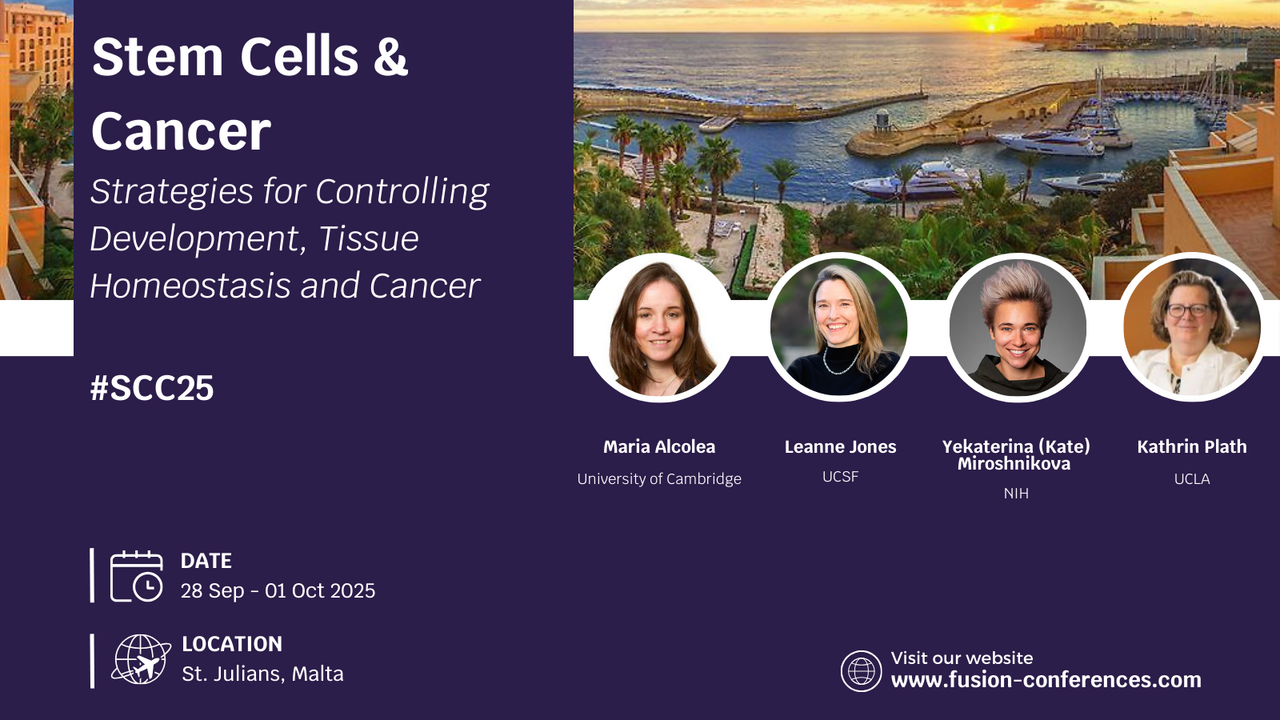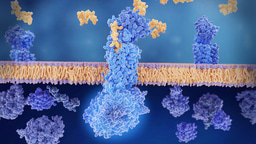Fusion Stem Cells & Cancer conference
Published in Biomedical Research

Two weeks ago, I had the pleasure of attending the Fusion Stem cells & Cancer conference in Malta. The conference is a continuation of the GRC ‘Stem cells & Cancer’ conference series, last held in 2023, organized by Maria Alcolea (University of Cambridge), Leanne Jones (UCSF), Kate Miroshnikova (Max Planck Institute), and Kathrin Plath (UCLA). This meeting sought to cover high-interest topics in the field including stem cell function, tumorigenesis, regenerative medicine, and organogenesis as well as to provide a platform for scientists and clinicians to share findings, gain knowledge, and build collaborations.
The first day kicked off with a session on Developmental Programs in Cancer. Scott Lowe (MSKCC) presented fascinating work using fluorescent labeling in the KPC mouse model of pancreatic cancer to visually trace the lineage of cells that have lost p53, allowing for investigation into the mechanisms of malignant transformation and the progenitor niche. Greta Skrupskelyte (University of Cambridge) continued on the topic of stem cell niches with work characterizing the differences between nascent and long-term persisting tumor niches in a mouse model of esophageal cancer. Jorge Almagro (Rockefeller University) showed how Wnt+ niches shield mouse mammary cancer stem cells from chemotherapy, using organoids to investigate the mechanism of desensitization. Amy Wagers (Harvard Medical School) shifted gears with a talk on strategies of utilizing CRISPR–Cas9-based genome editing to potentially cure Duchenne Muscular Dystrophy in a one time treatment. The final talk of the session given by Mike Hicks (University of California Irvine) focused on reconstructing skeletal muscles using HiPSCs after cachexia and chemo-radiation.
The conference had two sessions both focused on the tumor microenvironment with the first on Heterogeneity of Cells, Tissues, and Tumors and the next on the Role of the Environment. Helen Abud (Monash University) showed work investigating signaling that impacts plasticity in colorectal cancer. Toni Celia Terrassa (Hospital del Mar) covered immune evasive tumor phenotypes of breast cancer micrometastasis. Matheus Henrique Dias (Netherlands Cancer Institute) presented on a unique cancer treatment strategy involving intentional hyperactivation of cancer signaling pathways in addition to perturbation of stress responses. Further talks from the session included Kate Miroshnikova (Max Planck Institute) showing how stem cells respond to mechanical cues which are then able influence cell state, Cedric Blanpain (Universite Libre de Bruxelles) on the mechanisms regulating stem cell plasticity during tumor initiation, Valerie Weaver (UCSF) with work on how extracellular matrix stiffness enhances tumor aggression and DNA damage in mammary tumors, and Len Zon (Harvard University) on stem cell clonality and the niche.
The highlights for me were the two plenary talks given by Peter Dirks and Catriona Jamieson. Peter Dirks (The Hospital for Sick Children) gave a talk covering how latent Glioblastoma tumors make the switch to malignancy. Catriona Jamieson began her talk with a blast, showing a video of a NASA space mission take-off. Her lab, through a collaboration with NASA, sends tumor and stem cell samples to space to be studied on the International Space Station. Additionally, they have studied the blood stem cells of astronauts on these missions. Her work seeks to understand stem cell aging, the switch to premalignancy, and malignancy. They have found that low Earth orbit causes acceleration of these processes. She presented work showing that space flight reduces both telomere maintenance and HSPC self-renewal.
The conference was spectacularly organized. Talks, breaks, and meals were all held at one location, the Hilton Malta in St. Julian’s, which made networking and finding presenters after their talks easy. Additionally, the number of attendees was small at approximately 70 people allowing for more intimate interactions, focused discussions, and a greater opportunity for trainees to engage with more established researchers. The organizers also arranged a trip to the Blue Grotto and Marsaxlokk Market for attendees to get a break from the dark conference room, see Malta, and engage with other scientists. This was my first Fusion conference, and it was a wonderful experience. I would encourage other editors to consider attending a Fusion conference as well.
Further information on the conference can be found at: https://www.fusion-conferences.com/conference/186?tab=synopsis.



Please sign in or register for FREE
If you are a registered user on Research Communities by Springer Nature, please sign in